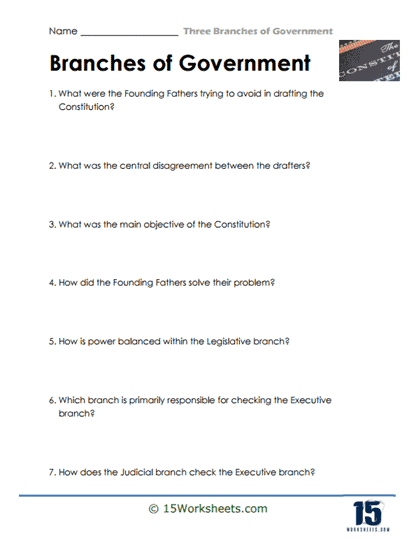Principles and Mechanisms

Worksheet Description
The worksheet dives into the foundational principles and mechanisms behind the creation of the U.S. Constitution, focusing on the intentions of the Founding Fathers. It seeks to illuminate the primary concerns that drove the drafting of the Constitution, disagreements among its framers, and the central goals they hoped to achieve. The worksheet also touches upon the checks and balances system inherent within the three branches of government, emphasizing the roles of the Legislative and Judicial branches in overseeing the Executive branch’s actions.
To adeptly tackle this worksheet, students must first acquire an understanding of the historical context surrounding the drafting of the Constitution. They should be familiar with the challenges faced by the Founding Fathers, the debates that occurred, and the compromises made to ensure the document’s ratification. A comprehension of the Constitution’s primary objectives and the mechanisms through which power is distributed among the three branches is also essential. Finally, to answer the questions about checks and balances, students will need to grasp how each branch can oversee and influence the others, particularly how the Legislative and Judicial branches interact with the Executive.
This worksheet is designed to cultivate students’ appreciation and understanding of the U.S. Constitution’s genesis and the intricate system of checks and balances. By posing questions about the Founding Fathers’ motivations and concerns, it seeks to foster a deeper connection to the historical events that led to the Constitution’s creation. The latter half of the worksheet aims to elucidate the mechanisms that prevent any single branch of government from gaining unchecked power. Overall, students are encouraged to view the Constitution not just as a historical document, but as a carefully crafted instrument that ensures the continued balance and fairness of the U.S. government system.
